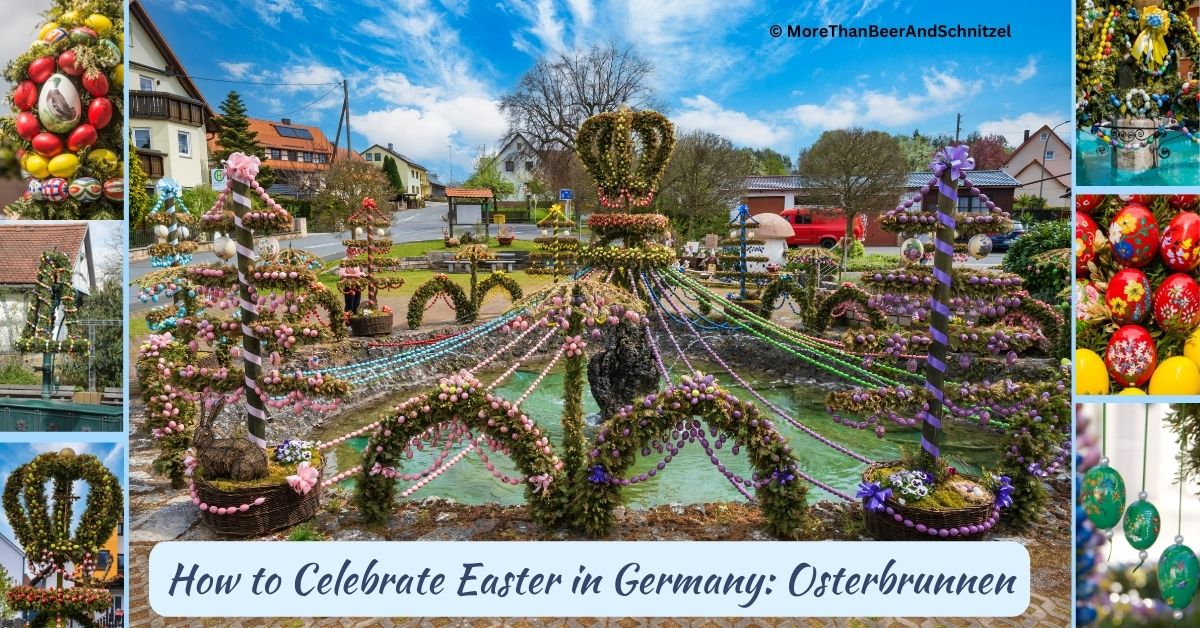Palm Sunday is the Sunday before Easter and the beginning of the Holy Week. It is also the day when people clean (Brunnen fegen) and start decorating wells and fountains (Brunnen putzen). They use spruce branches, greenery garlands, colored eggs, and “Pensala” (paper ribbons) to turns their fountains into Osterbunnen or Easter fountains.

Origin in Franconia
This tradition is not so much a custom observed everywhere in Germany, but originated in Franconian Switzerland and is most prevalent in that area. Franconia is a region in Germany which encompasses parts of three states: North Bavaria (the majority of Franconia), South Thuringia, and East Baden-Württemberg. Franconian Switzerland (Fränkische Schweiz) is located in Upper Franconia between Bamberg and Bayreuth.
In recent years however, the custom of decorating fountains and wells has spread across middle, south and east Germany, and you can find Osterbrunnen in many cities.

Decorations
These Osterbrunnen (Easter fountains) often have a crown or a cross, and the average fountain has around 1800-2000 eggs. They are usually blown out eggs that have been painted and decorated. Some have patterns, some have spring motifs like chickens and flowers, while others depict religious themes. In addition to eggs, there is greenery and spruce branches as well as colorful ribbons (Pensala or Penserla).
The decorations usually go up on Palm Sunday (though looking at some of the elaborate and large designs, one day is probably not enough) and stay up until two weeks after Easter.
The crown and cross relate to Jesus, the king, and his crucifixion. The greenery is a symbol of spring and renewed life, while the egg stands for fertility. Water as well as is a symbol of life and vital for survival.




Historic Background
While we know that the tradition has its roots in Franconian Switzerland we don’t know exactly why is started. Water and access to water has always been important. It is no coincidence that people settle near rivers and springs.
Therefore the most likely explanation for the cleaning and decorating of wells and fountains is that people in the Franconian mountains didn’t always have access to water like in other areas. Wells and springs played an important role and great care went into cleaning and maintaining them because life and survival depended on it.
But it is also possible that tourism played a role in the decoration of fountains. It certainly does now. Some cities see hundreds or thousands of tourists flocking to their fountains and admire the beautiful creations.

Easter Fountains in the U.S.
The Michigan town of Frankenmuth is known for its Bavarian-style architecture and its German roots. They also adopted the Franconian tradition of decorating their fountains for Easter, but use a lot more flowers.
Read more about it here.
Sources and Resources
If you want to know a little more and see a map you can download a broschure here (in German): https://shop.fraenkische-schweiz.com/kult…/30/osterbrunnen
- Wiki Osterbrunnen- dt
- Pinterest Board



Only registered users can comment.